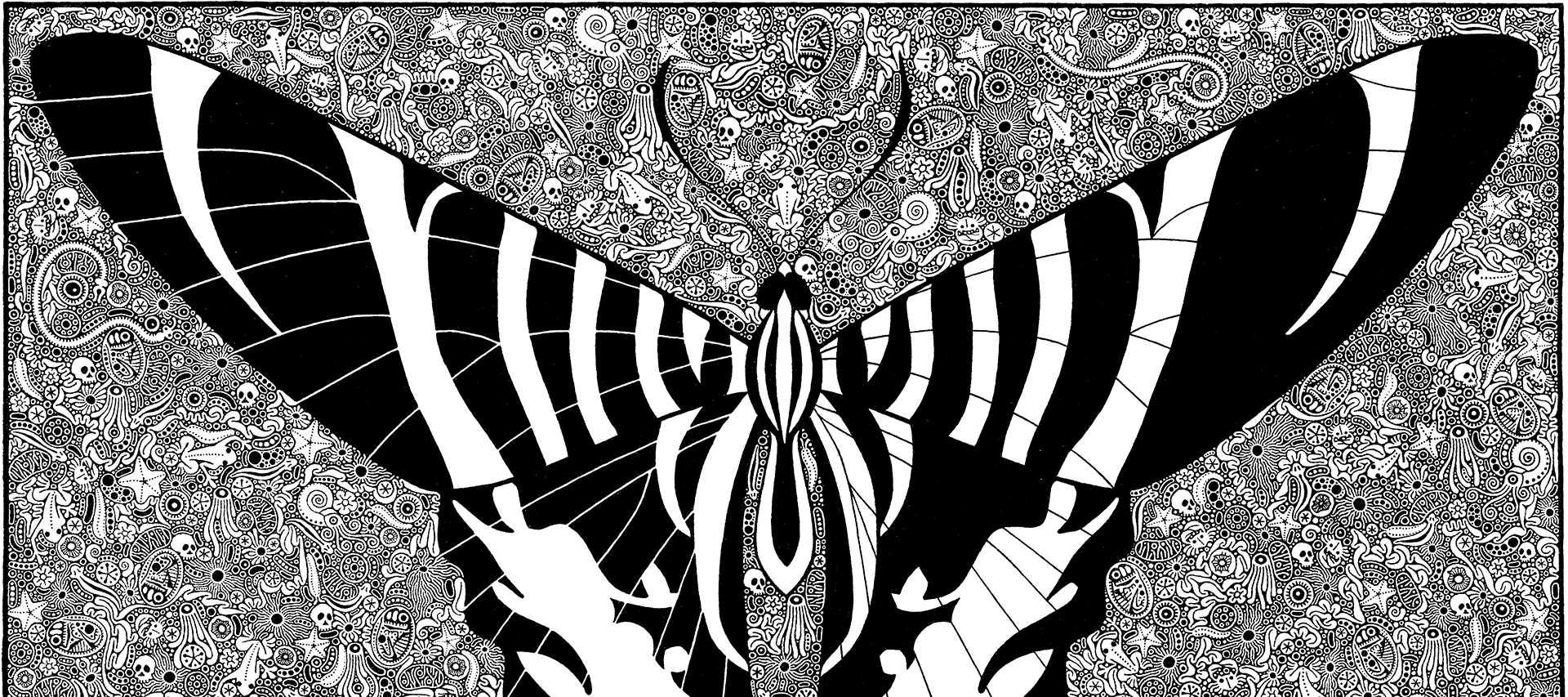

On the Galápagos island of Floreana, a giant tortoise went extinct some 150 years ago, after human settlement. Conservationists are now working to bring its descendants, discovered on nearby islands, back to Floreana. But there is a problem: Rats, which came with the settlers and eat tortoise eggs and babies, run rampant there. If you could help bring back the tortoise by poisoning all of the island’s rats, would you do it?
Here is an important detail: The poison is brodifacoum, which kills through bleeding from internal organs and from eyes, nose, and mouth; the rats slowly stop moving but remain conscious until they die. The process takes about a week, which is important because this prevents the rats from associating the poison pellets with sickness.
The scenario is not hypothetical — the group Island Conservation plans to see it through — and it is just one of many that Emma Marris presents in her 2021 book Wild Souls. Australia kills hundreds of thousands of cats annually to save birds. Alberta has shot over a thousand wolves from helicopters to save caribou.
These scenarios illustrate a point the historian William Cronon makes in his 1995 book Uncommon Ground: Rethinking the Human Place in Nature. Wilderness, he notes paradoxically, is “a human creation.” The ideal of nature as it used to be before human intervention and before we introduced what we now call “invasive species” is one that Western urbanites created in the late nineteenth century, chiefly as a foil for their own modernity. Their signature achievement was to designate large swaths of the American landscape as national parks, intended to be as free as possible from human interference, which often meant expelling native peoples who had long been cultivating that land. Cronon describes this as a “dualistic vision in which the human is entirely outside the natural.” His aim is to show how this vision still permeates much of environmentalism and stands in the way of responsible action toward nature, particularly in the places where we actually live.
Marris describes herself as continuing Cronon’s work: for even as many professional ecologists and conservationists have begun to let go of the mythical ideal of pristine wilderness, popular environmentalism largely hasn’t. In the 2021 Atlantic article “The Nature You See in Documentaries Is Beautiful and False,” Marris notes that productions like Planet Earth often go to great lengths to edit out any sign of human civilization to create their stunning visions of wilderness. And even though specialists are generally improving, Marris believes that many still suffer from the same old problem, most clearly when they treat the restoration of a natural state before human civilization as an ethical duty.
The scenario of dealing mass death to the rats of Floreana to restore the native tortoise is a helpful clarification of the vision of wilderness as an ideal that excludes humans. Here, too, the aim is to recreate an earlier, supposedly better state of nature before human (and murine) arrival on the island. But there is a striking clarity of the moral stakes: it would take a gruesome battle. Unlike with a romantic scene of, say, the African savannah with David Attenborough voiceover, it is hard to be starry-eyed about what this means, to idealize the result as an Eden before the fall of human arrival. Nature, in this vision, is a battlefield, and humans get to choose winners and losers. Choosing not to kill the rats means letting them destroy their helpless prey. Choosing to defend the prey means dealing mass death to the rats.
Nature as a battlefield is a deeply uncomfortable idea. It risks putting too much emphasis on “Nature, red in tooth and claw.” It also invites judgments about who are the heroes and who are the villains — judgments that may seem troublingly anthropomorphic. Are rats evil? This is the stuff of children’s literature. Consider Kenneth Grahame’s classic The Wind in the Willows, where, in a scene adapted from the Odyssey, Toad and his friends reclaim Toad Hall from the weasels and stoats who had invaded while Toad was gallivanting about. Unlike in Homer, no blood is shed when Toad returns, but there is much whacking indeed — and it is glorious. And, actually, Toad’s friend Ratty is indisputably a hero.
But maybe we confine this view of nature as an epic battlefield to children’s literature because we are afraid to take it seriously. If we did, human judgment about nature, about who should win and who should lose, would reenter our pristine Eden through the back door and muck it up again.
The Northern Cardinal is not an endangered species, neither is the American Robin. But when an Eastern rat snake killed all their babies in my yard last spring, I did not hesitate — I wanted it dead the moment I spotted it from my home office window. The garden shed was in the opposite direction. I hurried and got a hatchet and a shovel. The snake hadn’t moved. Unfortunately, the hatchet was too dull for chopping off the snake’s head. I probably broke its spine, but I wanted to be sure I had done the deed, as the serpent was still lurching toward me. The shovel finished the job.
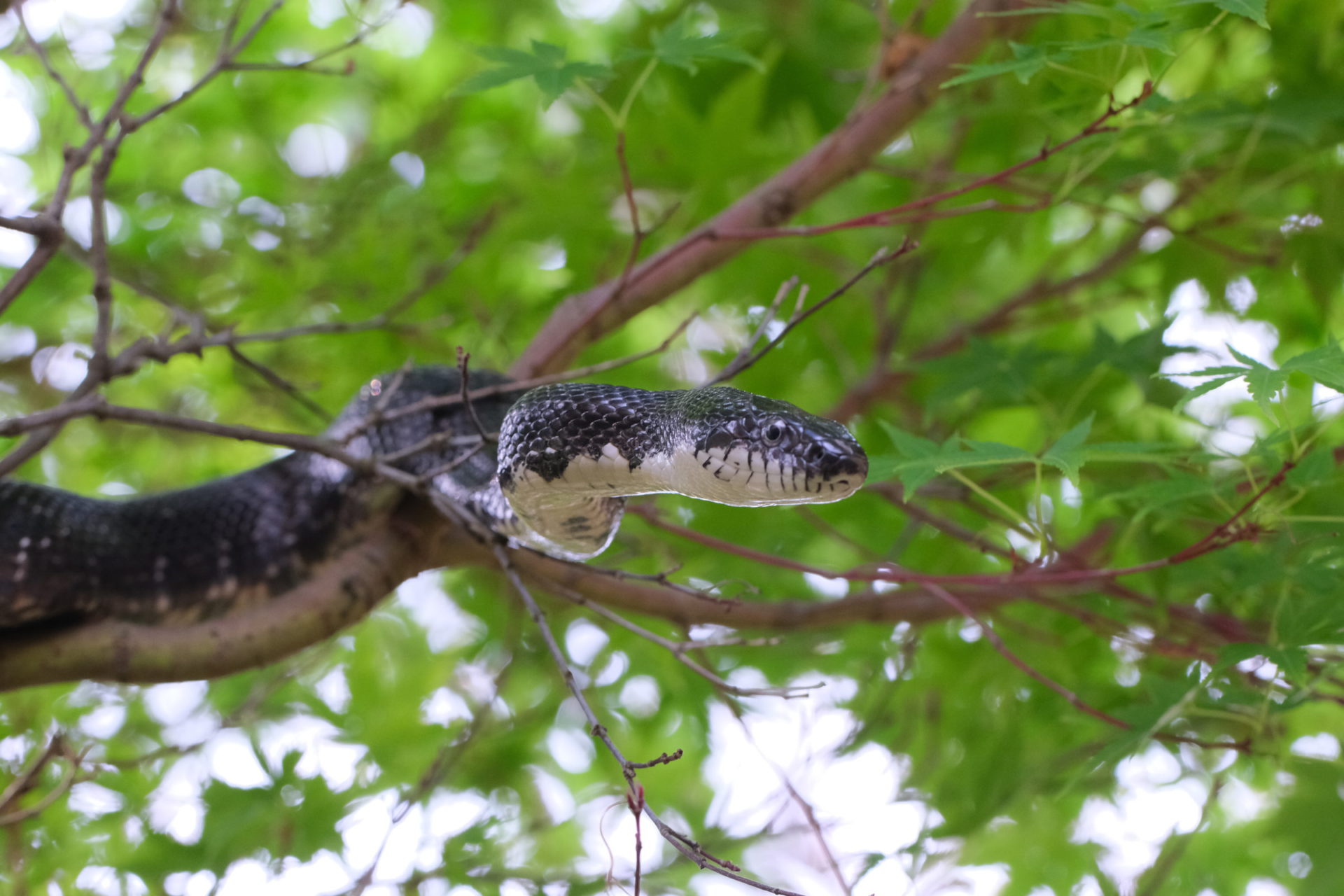
To be clear, the reason for my brutality was not self-defense. Eastern rat snakes can get intimidatingly large but are harmless to us. Nor was it because the snake might scare my children. This is the kind of wildlife I’m hoping they will learn to stomach. It was about the birds — not about saving them, exactly, except in the sense that there may have been other nests I didn’t know of, or future nests next spring. No, I felt I had a responsibility to bring some kind of justice, because I owed it to the cardinal.
Earlier in the season, a cardinal was at my feeder. He took off, miscalculated in mid-flight, and collided with the window next to my desk. It was a devastating mistake; he should have seen me behind the glass but failed to make the turn in time. Now he was lying on his back, wings outstretched, motionless.
By the time I reached him, he still hadn’t moved, and he didn’t protest when I lifted him into a cardboard box. He only twitched his head, his black eyes staring emptily into space. A friend and bird expert advised us to close the box, poke some holes for air, and give the bird several hours: If nothing was broken, he would likely fly again. By the end of the day, he was able to flutter away but then took hours to finally fly. His chances in the wild seemed slim.
But he found a mate — I was certain he was the same bird we had rescued, a feather on his back remained forever crooked. They nested in our boxwood bush, the first cardinal nest we had ever seen in our yard. Anyone who has witnessed this marvel knows the sheer joy it brings, especially to children. The gaping beaks were visible from a bedroom window. A couple feet over, a robin family set up their home as well.
Then one day the cardinal babies were gone. Far too young for flight, there was no question they were dead.
A few days later, the robin mother was screeching, helplessly witnessing the slaughter of her children as the rat snake, a type of constrictor, was about to strangle one of them. My wife was working in the garden, her own mother instincts swiftly reacting to the cry. A stick as her only tool, she hoped to beat the living daylights out of the serpent, which eventually but reluctantly retreated. All efforts to fortify the bush against the intruder with rose brambles were useless. The next morning, the robin babies were gone, their mother occasionally returning to mourn her loss.
This is why I killed the snake. It was a ruthless killer, a voracious glutton, a vicious beast whose contempt for helpless fledgling life knew no bounds. And the cardinal, whose life my window almost ended and whom I had saved, lost all he had. I owed him.
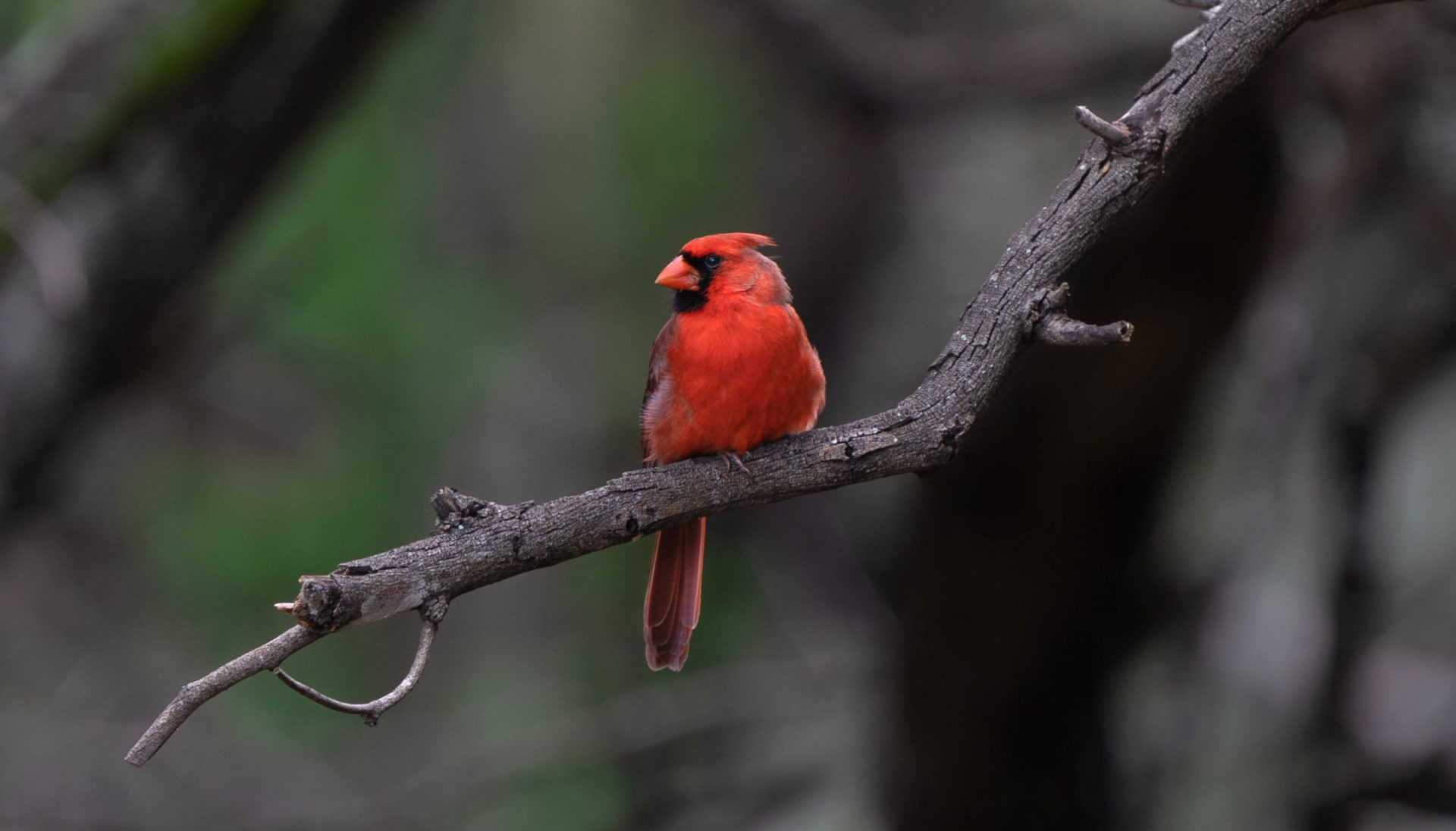
A possible retort to this episode is easy to imagine. It’s a parable of “humans against nature.” We are the exterminator species, killing in ignorance and arrogance. And because the snake was obviously just acting according to its nature, my killing it for doing so reveals my true impulse: mastery. By pretending to be above nature, we are the only unnatural creature.
But, so the story goes, things were not always this way. Long ago, there was harmony between us and the wild. We killed for food and to defend ourselves, but at some point in history something changed. We became alienated from nature because of our tools, which made us masters of nature rather than part of it.
In one influential telling, Lynn Townsend White’s 1967 Science magazine essay “The Historical Roots of Our Ecological Crisis,” the change was as specific as the invention of a particular plow. Original plows only scratched the surface, explains White, a historian of the medieval period. Then, “by the latter part of the 7th century … certain northern peasants were using an entirely new kind of plow, equipped with a vertical knife to cut the line of the furrow, a horizontal share to slice under the sod, and a moldboard to turn it over.” Using this new plow required not two oxen but eight. Because no single farmer had eight oxen, the organization and politics of land changed to adapt to the needs of this “power machine to till the earth.” This was the critical moment, says White: “Formerly man had been part of nature; now he was the exploiter of nature.”
Other versions of the story peg the shift to the beginning of modern science, with Francis Bacon and René Descartes, or to the Industrial Revolution and the steam engine. But for purists, agriculture is a favorite. William Cronon quotes Dave Foreman, founder of the advocacy group Earth First!, who wrote:
Before agriculture was midwifed in the Middle East, humans were in the wilderness. We had no concept of “wilderness” because everything was wilderness and we were a part of it. But with irrigation ditches, crop surpluses, and permanent villages, we became apart from the natural world…. Between the wilderness that created us and the civilization created by us grew an ever-widening rift.
There is some truth to this idea. I would not have killed the snake with bare hands, and probably not even with a rock. The opportunity to kill arose because it was already present within an arsenal of tools in my shed. The shovel — agriculture again — was the first weapon I had in mind. Grabbing it was second nature.
But the trouble with the poison-pill story of when we became masters of nature — aside from its historical arbitrariness — is that it is a counsel of despair. Its effect is always to idealize the state of nature that we imagine existed before we made our home in it, which offers no guidance for the choices between life and death we face where we do make our home, much less our choices in the wild.
To be fair, Lynn Townsend White did hope to offer a constructive alternative to human exploitation of nature. Because he believed, bizarrely, that Christianity “insisted” on exploitation as a divine decree, he argued that the replacement needed to be religious too, and proposed St. Francis as “a patron saint for ecologists.” Francis, he writes, “tried to substitute the idea of the equality of all creatures, including man, for the idea of man’s limitless rule of creation.” Francis’s idea was “heretical,” White believes, but points the way forward.
What is a Franciscan relationship to nature? There are famous stories of Francis preaching to birds and taming a wolf that terrorized the town of Gubbio. But the most colorful story of the Franciscan spirit, borrowing again from Emma Marris’s book, comes from a few centuries after Francis himself.
In 1545, the wine growers of St. Julien, a town in Eastern France, got fed up with weevils that ravaged their vines. But instead of exterminating the insects, the town assigned them a lawyer and prosecuted them in court. The judge ruled as follows:
Inasmuch as God, the supreme author of all that exists, hath ordained that the earth should bring forth fruits and herbs, not solely for the sustenance of rational human beings, but likewise for the preservation and support of insects, which fly about on the surface of the soil, therefore it would be unbecoming to proceed with rashness and precipitance against the animals now actually accused and indicted; on the contrary, it would be more fitting for us to have recourse to the mercy of heaven and to implore pardon for our sins.
Then followed prayers and masses and a procession of the Eucharist around the vineyard. The weevils evidently got the message and left.
But then, some forty years later, they came back. Again the weevils were assigned a lawyer, Pierre Rembaud, who argued that, according to Genesis, they had a right to eat plants. Furthermore, Rembaud found it unreasonable to expect the weevils to obey human judgments. (We will return to this issue.) Prosecutors shot back that, also in Genesis, God had given humans dominion over the animals. There the proceedings seemed stuck, carrying on for weeks. The wine growers must have been losing their patience when they offered a compromise: They could give the weevils a plot of their own, where they would be free to eat as they pleased, away from the vineyard. The idea seemed reasonable, but one of the weevil agents, Antoine Filliol, sensed a bad deal. The forbidden fruit was clearly better than what was on offer in the proposed weevil reservation; his clients were not interested. Now this seemed a matter purely of scientific fact, so the judge ordered an independent investigation of the designated weevil plot.
It is a profound disappointment that here the record of the trial ends — the rest of the last page got eaten by animals.
Whatever the outcome, the story would seem to be a perfect example of the “equality of all creatures” that White demanded. We see people treating animals with profound respect, considering in earnest the needs of the lowliest of creatures. This is admirable, but thinking of it as equality rather than mastery would be fooling ourselves. What the story illustrates is that our unparalleled mastery over the rest of nature is what makes us responsible for the welfare even of the least of these. It is a singularly human judgment — of the weevil’s lawyers, their prosecutors, and their judge — that weevils matter at all, or that the Floreana tortoise does, or the rats, or the cardinal, or the snake. And it is a correct judgment, even if by itself it does not offer moral clarity for deciding who will live and who will die.
But the false ideal of nature untouched by humans obscures these decisions altogether. Rather than putting limits on human mastery, it is an abdication of responsibility to make difficult choices.
The wilderness ideal also fails to grapple with the fact that much about wilderness, let’s face it, just isn’t ideal, or is at best deeply morally ambiguous.
Baboons, for example, are wretched creatures — not all of them all the time, but enough so that Emma Marris calls them “assholes.” This is not just because their politics are violent, as males bully each other in their constant fights over who’s boss (as, to a lesser extent, do females). It’s because of the special brutality of some males toward mothers, infants, and the unborn.
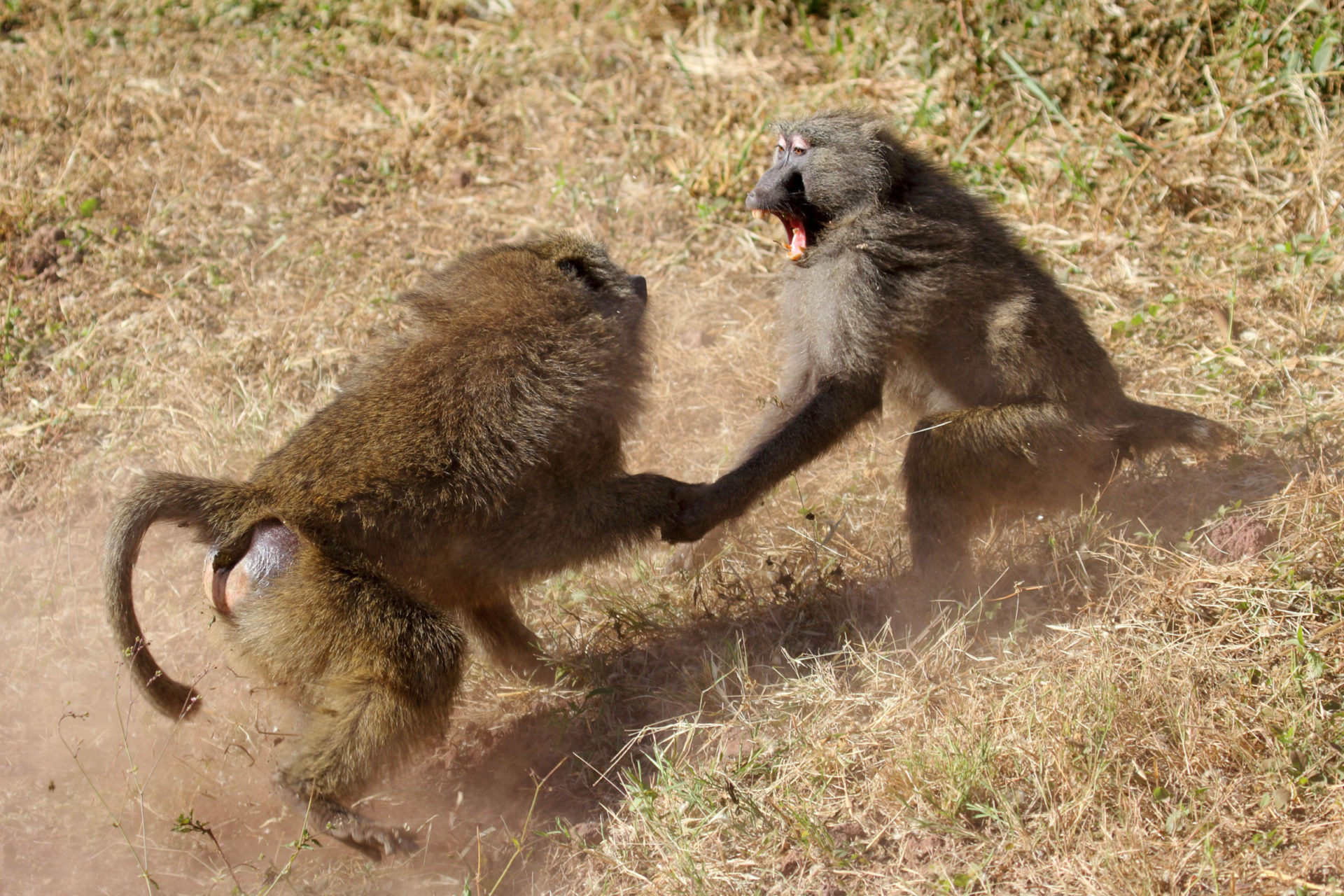
Primatologists have long known that young baboon males who immigrate into another troop where they seek to gain top rank will sometimes kill infants and attack pregnant females — and, in doing so, kill their fetuses. One researcher recounting such an attack described a big young male named Hobbes, who had recently transferred to a new group: “He began to selectively attack pregnant females. He beat and mauled them, causing three out of four to abort within a few days.”
A 2017 study of savannah baboons in Kenya shed light on a long-suspected reason for this. Killing infants and fetuses restarts their mothers’ reproductive cycling, making them sexually available for the newcomer killer males. That the mothers sometimes die amid the violence is collateral damage that is rare enough to make it worth the risk to the males, the researchers suggested. Among savannah baboons in Botswana, infanticide by immigrant males accounts for about a third of all infant deaths. In the face of such despicable violence toward the most defenseless of their own, the idea of nature as pristine so long as we are not part of it is grotesque.
This deeply unsettling sense of the wild, its moral fraughtness, is all but lost to us who have inherited an idea of wilderness as a vast, romantic landscape, home mostly to animals we find to be pleasant, including toward us. In praise of the American wilderness, Henry David Thoreau wrote: “We are told that within three miles of the center of the East-Indian city of Singapore, some of the inhabitants are annually carried off by tigers; but the traveller can lie down in the woods at night almost anywhere in North America without fear of wild beasts.” It’s hard not to be swept up by this feeling of sublime peacefulness, especially if one has experienced the majestic calm of a wilderness like that of California’s redwood forests, or that of Oregon’s Crater Lake. These are sacred places, rightly set apart so tourists don’t tread on them except to behold and stand in awe. But they also deceive.
In a review of Robert Macfarlane’s 2007 book The Wild Places, about his exploration of the British Isles, the Scottish writer Kathleen Jamie called the book “comforting” because it glosses over conflict both natural and human. “Waiting to be discovered,” Jamie wrote, “is a wildness which is smaller, darker, more complex and interesting, not a place to stride over but a force requiring constant negotiation. A lifelong negotiation at that: to give birth is to be in a wild place, so is to struggle with pneumonia…. There is Ben Nevis [Scotland’s tallest peak], there is smallpox. One wild worth protecting, one worth eradicating. And in the end, we won’t have to go out to find the wild, because the wild will come for us.”
The wildness of baboons is among those darker and more complex kinds, somewhere between Ben Nevis and smallpox. Marris is unflinching in spelling out the tragic choice this presents: “If we truly care about baboons flourishing, it seems possible that humans might have a duty to periodically go into every baboon troop on the planet and shoot the most aggressive males” — a thought she finds both appealing and horrifying. It’s not entirely a theoretical idea, as Marris explains. An accidental experiment that began in 1983, when the most aggressive males from one troop ate from a garbage dump and died of bovine tuberculosis, showed that even a decade later the troop still retained a distinctly more peaceful culture.
The idea of intervening in the lives of wild animals to impose our moral standards on them seems ludicrous, in a way. As with the weevils, we should not expect baboons to submit to our judgments. This looks a lot like human mastery running amok.
On the other hand, the vision of a more peaceful baboon life is not an expression of the will to power but its rejection: It is to claim that a state of nature in which the most violent win and the weakest suffer is a kind of moral chaos. This is not to say that we can bring moral order; almost certainly we can’t in most cases — it isn’t clear that shooting the most aggressive baboon males wouldn’t introduce more problems for them than it would solve. But looking at baboon violence as a moral problem is a way of apprehending something of the darker wildness that is everywhere in nature: it’s the pain of the underdog.
Of all the fights there are in nature, one of the more lopsided ones in terms of both power and number is that between a seal and a pod of killer whales. If the seal happens to seek refuge on an ice floe, the killer whales, whose pods can include dozens, will create a wave to wash the poor critter into the water.
In 2009, marine ecologist Robert Pitman observed something that until then had not been widely known: that humpback whales sometimes join this fight, taking the side of the seal. In one spectacular event near Antarctica, a pod of killer whales had just washed a Weddell seal off his floe when the seal — instead of jumping back on the ice, as they sometimes do — swam into open water, where he would normally have no chance of escape. “Then, suddenly,” Pitman later recalled, “one of the humpbacks comes to meet the seal and, just as it gets to the seal, rolls over on its back and the water washes the seal onto its chest. The whale lifts its chest up out of the water with the seal on it.” At one point, the seal began to slide off, and the humpback used its massive flipper to carefully push it back up onto the whale’s chest.
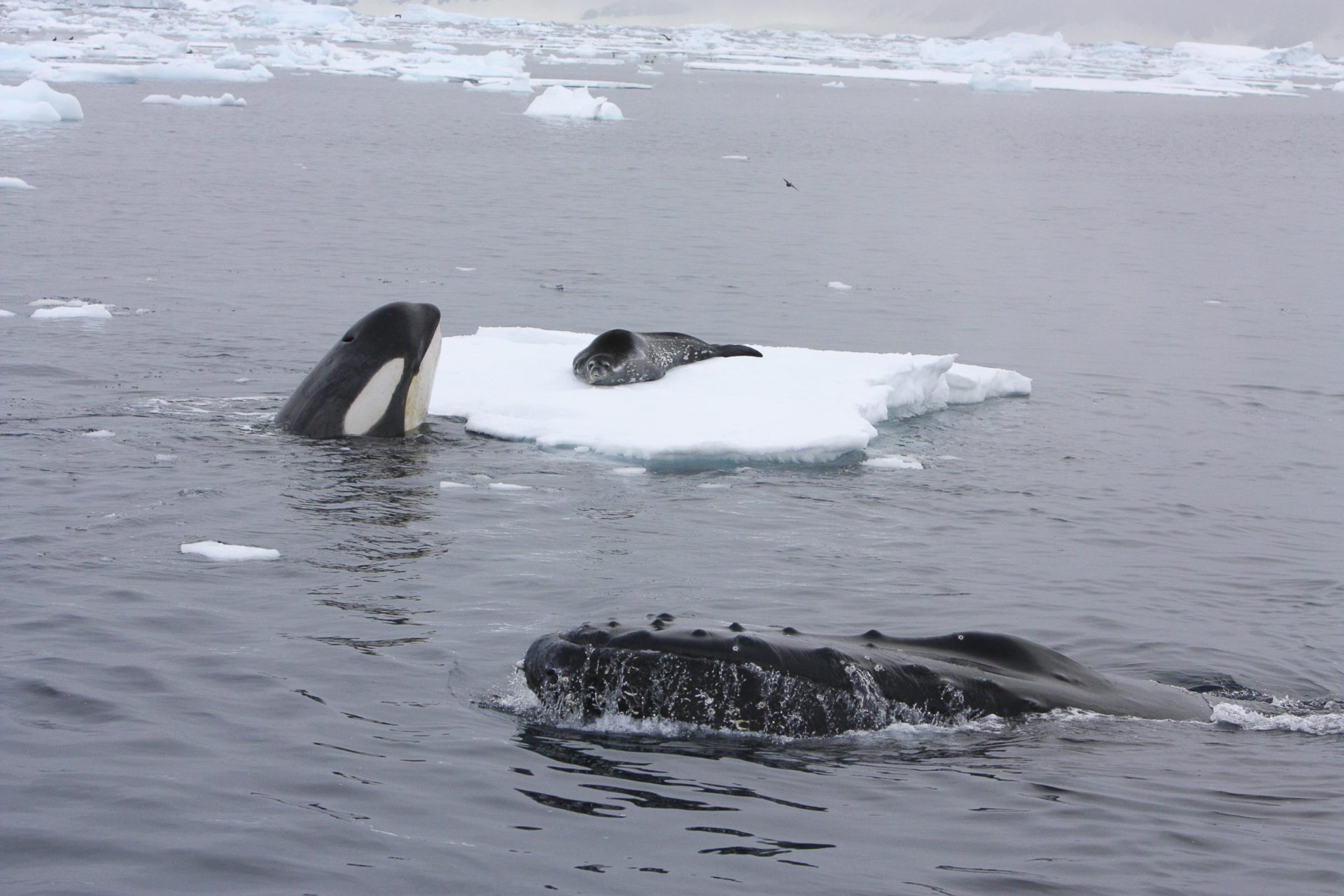
That humpbacks rescue killer whales’ prey, and not only seals, is now widely known among professional and amateur observers. Scientists seem unsure about whether the humpbacks are deliberately trying to save the prey or whether they are in fact acting in self-interest, as animals are thought typically to do. It’s important to know that humpback calves, too, are prey for killer whales, and so some believe, including Pitman, that adult humpbacks come to the rescue of killer whales’ prey just in case it is one of their own, thus offering “inadvertent” help to others — self-interest that soft-hearted humans mistake for compassion.
A July 2022 Radiolab episode drew attention to something that would seem to point beyond this idea. Marine biologists Nancy Black and Alisa Schulman-Janiger have been studying killer whales in Monterey Bay off the coast of California for decades. In recent years, one group of killer whales there has become exceptionally skilled at killing gray-whale calves. But humpbacks are numerous in the area and sometimes come to defend the grays.
One must picture this scene to get a sense of the drama. A gray whale mother and her calf are migrating from Mexico’s Pacific coast to Alaska. In Monterey Bay, ten killer whales, which are typically over 20 feet long and weigh 6 tons, attack the calf. The calf may be roughly their size, but it is slow and clumsy, and, as a baleen whale, has no teeth. The killer whales’ goal is to separate the calf from its mother and wear the little one out by pushing it down into the water in order to keep it from coming up for air — they want to drown it. This can take hours, as the gray-whale mother — herself a giant of some 45 feet and up to 40 tons — and her calf will roll, splash, and push away from the killer whales.
In this case, the gray-whale mother fails to fend the killer whales off. They are too agile, too many, and they don’t give up.
Then the biologists, observing from a boat directly at the scene, notice two humpback whales approaching. Humpbacks are somewhat longer and faster than gray whale adults, and their tails are a formidable weapon. But these humpbacks come too late — the gray-whale calf is dead, and its mother swims away in defeat.
Oddly, the humpbacks don’t leave. Instead, more are coming — to protect the dead gray-whale calf and prevent the killer whales from feeding on it. By the time dusk approaches seven hours later and it gets too dark for the biologists to see, at least sixteen humpbacks continue to fend off the killer whales. Whatever blind forces we might say compel their actions, the humpbacks appear as if they are fighting out of a deeper principle: to guard a helpless creature they have sworn to protect, even after it has died.
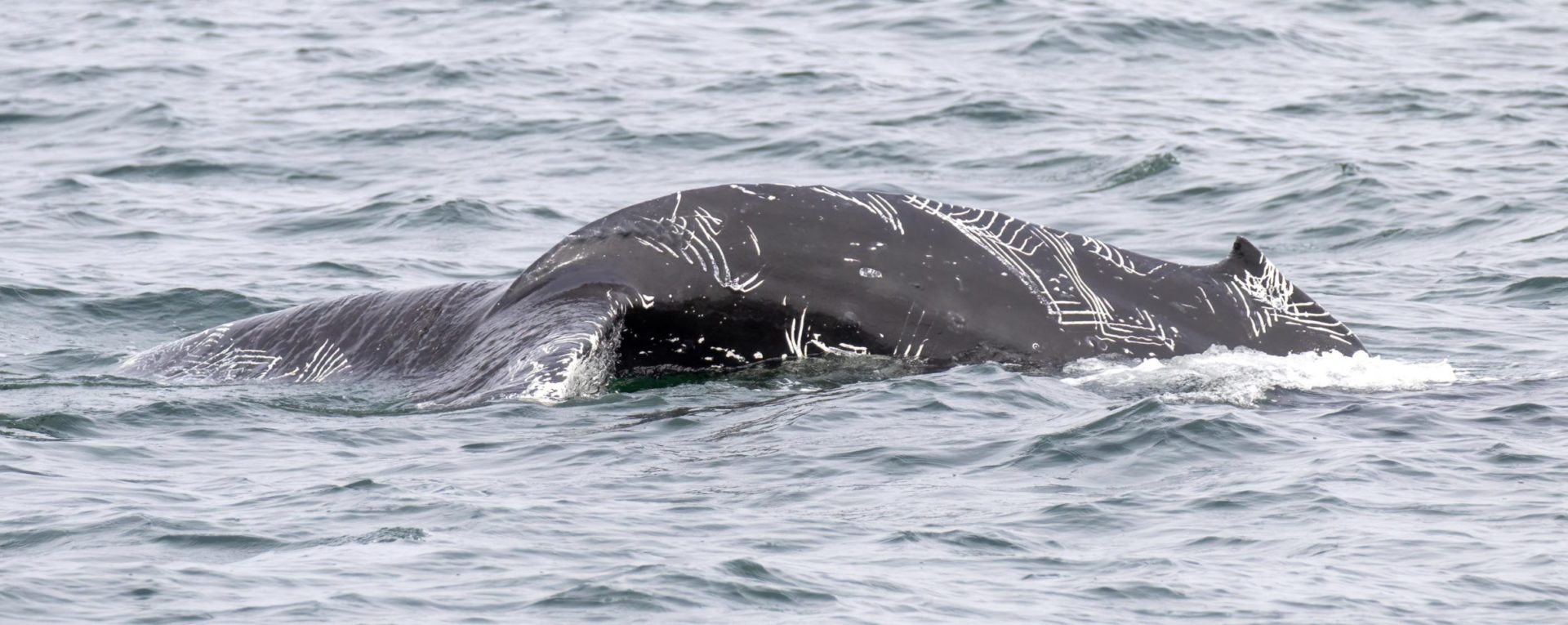
This is no mistake, an inadvertent behavior of whales defending their living germline. On another occasion, Schulman-Janiger witnessed an event very much like this, except this time, a day after killer whales drowned a gray-whale calf, two humpbacks remained on the scene: “Everything was extremely slow-motion,” she recounts on the podcast, describing the humpbacks “turning upside-down and looking at the calf, touching it with the flipper very gently, pushing their head against it, moving the carcass between them.” It all “looked a lot like what we associate with grief.”
Walking in my yard one fall, I noticed out of the corner of my eye a loud buzzing object hovering in midair. It was a cicada and a cicada-killer wasp of roughly equal size, locked in a struggle to the death — the cicada’s, surely. Instinctively, I picked up a stick and broke up the fight. By that time of year, cicadas have only days left to live before they lie belly-up on the ground and expire, and yet that one seemed like it needed to live, or at least not die by the sting of a beastly wasp. A better student of nature might have waited to see what would happen, but defending the underdog, like a humpback helping the gray whale, felt like the most natural thing to do.
In a way, it may have been a silly protest against the brute fact that predators kill in order to live. And yet there is a similar impulse that motivates efforts to preserve plant and animal species, rainforests and national parks, except that there the predator too is typically human beings: It is because we have considerable mastery over the rest of nature that we can act also to guard the underdog, even when the bully it needs protecting from is us.
On the other hand, I sometimes find myself rooting for the predator. Seeing the cheetah bored out of his mind in the Maryland Zoo, with the antelope in the opposing enclosure as if to tease him, makes me wish I could see him truly himself, hunting at full speed. And reading J. A. Baker’s 1967 book The Peregrine, I can’t help but feel the allure of the falcon’s perfect kill. Responsible human action in nature must somehow come to terms with both of these impulses: There’s a tragic beauty in the drama of killer whales hunting — and yet the humpbacks trying to stop them seem like the good guys.
The anthropologist and science writer Loren Eiseley, in an exploration of the word “natural” in his 1960 book The Firmament of Time, had an oddly similar experience to mine with the cicada and the killer wasp. He was in a desert valley in the West when he came upon a “huge blacksnake which was partially looped about the body of a hen pheasant” — both hovering in midair, with the bird trying to fly away but crashing repeatedly as the snake was at the same time strangling it. “I suppose I could have waited there to see what would happen,” Eiseley wrote. “I suppose it might have been worth scientifically recording. But I could not stand that ceaseless, bloody pounding in the gravel.” And so he “arbitrated the matter” and separated the two. Struggling to offer a reason for it, he concluded that he had “in some insubstantial way, reconciled them.” It was a reconciliation made possible by the fact that he transcends them as a creature both within nature and stretching beyond it. “Man is not totally compounded of the nature we profess to understand. Man is always partly of the future, and the future he possesses a power to shape.”
Human power is what defenders of wilderness often fear, since we might use it to destroy — even as some of them rely on the same power in trying to preserve an idealized notion of the wild, and by spilling blood, no less: the massacre of rats to restore the tortoise. What underlies this paradox is the romantic ideal of wilderness without humans. But imagining us outside of nature is the same mistake as imagining us as having limitless mastery over it. In both cases, nature is our opposite, like a foreign land, rather than the home whose threshold we naturally cross when we tend the garden and till the soil.
That garden — especially where it is still largely wild — indeed deserves protection from our own excessive predation. But the allure of the wild remains a poor guide for building a home, for seeking the flourishing of creatures we live with, or deciding about their life and death.
Ever since I killed the snake last spring, there has been a change in the yard: there are voles everywhere, digging tunnels beneath the grass. One lives below the bird feeder, where it darts forth at times to snatch a seed. They are on the menu for rat snakes. There is also pest control for eradicating them. But why should I? They save me a lot of trouble loosening the soil to plant grass where none has been able to take root for years. They are now my fellow gardeners.
Exhausted by science and tech debates that go nowhere?